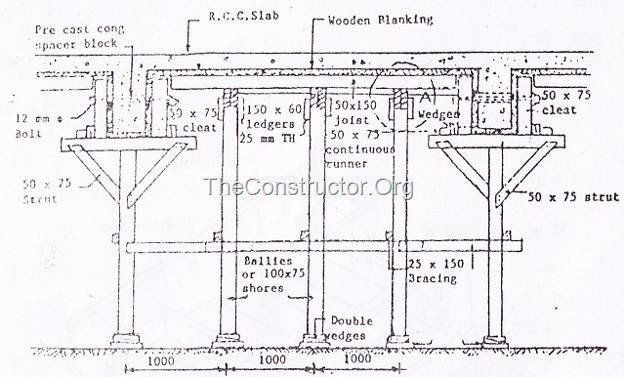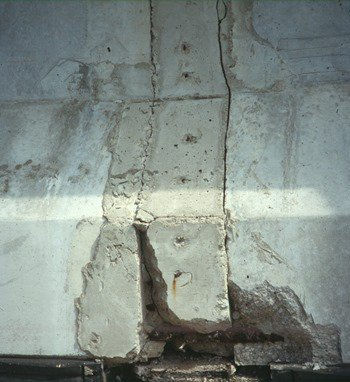Guides for Formwork (Shuttering)
- kim theodore Dagatan

- Nov 7, 2018
- 4 min read
Formwork (shuttering) in concrete construction is used as a mould for a structure in which fresh concrete is poured only to harden subsequently. Types of concrete formwork construction depends on formwork material and type of structural element.
Formworks can also be named based on the type of structural member construction such as slab formwork for use in slab, beam formwork, column formwork for use in beams and columns respectively etc.
The construction of formwork takes time and involves expenditure upto 20 to 25% of the cost of the structure or even more. Design of these temporary structures are made to economic expenditure. The operation of removing the formwork is known as stripping. Stripped formwork can be reused. Reusable forms are known as panel forms and non-usable are called stationary forms.
Timber is the most common material used for formwork. The disadvantage with timber formwork is that it will warp, swell and shrink. Application of water impermeable cost to the surface of wood mitigates these defects.
A good formwork should satisfy the following requirements:
It should be strong enough to withstand all types of dead and live loads.It should be rigidly constructed and efficiently propped and braced both horizontally and vertically, so as to retain its shape.The joints in the formwork should be tight against leakage of cement grout.Construction of formwork should permit removal of various parts in desired sequences without damage to the concrete.The material of the formwork should be cheap, easily available and should be suitable for reuse.The formwork should be set accurately to the desired line and levels should have plane surface.It should be as light as possible.The material of the formwork should not warp or get distorted when exposed to the elements.It should rest on firm base.
Types of Formwork (Shuttering) for Concrete Construction:
1. Timber Formwork:
Timber for formwork should satisfy the following requirement:
It should be
well seasonedlight in weighteasily workable with nails without splittingfree from loose knots
Timber used for shuttering for exposed concrete work should have smooth and even surface on all faces which come in contact with concrete.
Normal sizes of members for timber formwork:
Sheeting for slabs, beam, column side and beam bottom25 mm to 40mm thickJoints, ledges50 x 70 mm to 50 x 150 mmPosts75 x 100mm to 100 x 100 mm
2. Plywood Formwork
Resin bonded plywood sheets are attached to timber frames to make up panels of required sizes. The cost of plywood formwork compares favourably with that of timber shuttering and it may even prove cheaper in certain cases in view of the following considerations:
It is possible to have smooth finish in which case on cost in surface finishing is there.By use of large size panels it is possible to effect saving in the labour cost of fixing and dismantling.Number of reuses are more as compared with timber shuttering. For estimation purpose, number of reuses can be taken as 20 to 25.
3. Steel Formwork
This consist of panels fabricated out of thin steel plates stiffened along the edges by small steel angles. The panel units can be held together through the use of suitable clamps or bolts and nuts. The panels can be fabricated in large number in any desired modular shape or size. Steel forms are largely used in large projects or in situation where large number reuses of the shuttering is possible. This type of shuttering is considered most suitable for circular or curved structures.
Steel forms compared with timber formwork:
Steel forms are stronger, durable and have longer life than timber formwork and their reuses are more in number.Steel forms can be installed and dismantled with greater ease and speed.The quality of exposed concrete surface by using steel forms is good and such surfaces need no further treatment.Steel formwork does not absorb moisture from concrete.Steel formwork does not shrink or warp.
Construction of Concrete formwork:
This normally involves the following operations:
1. Propping and centring
2. Shuttering
3. Provision of camber
4. Cleaning and surface treatment
Order and Method of Removing Formwork:
The sequence of orders and method of removal of formwork are as follows:
1. Shuttering forming the vertical faces of walls, beams and column sides should be removed first as they bear no load but only retain the concrete.
2. Shuttering forming soffit of slabs should be removed next.
3.Shuttering forming soffit of beams, girders or other heavily loaded shuttering should be removed in the end.
Rapid hardening cement, warm weather and light loading conditions allow early removal of formwork. The formwork should under no circumstances be allowed to be removed until all the concrete reaches strength of atleast twice the stresses to which the concrete may be subjected at the time of removal of formwork. All formworks should be eased gradually and carefully in order to prevent the load being suddenly transferred to concrete.
Figure 1 to 6 shows formwork for different types of members in civil engineering construction.

Figure 1(a): Details of timber formwork for RCC beam and slab floor

Figure 1(b): Details at section (A) shown in above figure

Figure 2(a): Elevation

Figure 2(b): Details of timber formwork for circular RCC column

Figure 3(a): 150 3D View

Figure 3(b): Details of timber formwork for square or rectangular RCC column

Figure 4: Sectional plan showing details of timber formwork for an octagonal column

Figure 5: Details of formwork for stair

Figure 6: Timber formwork for RCC wall




Comments